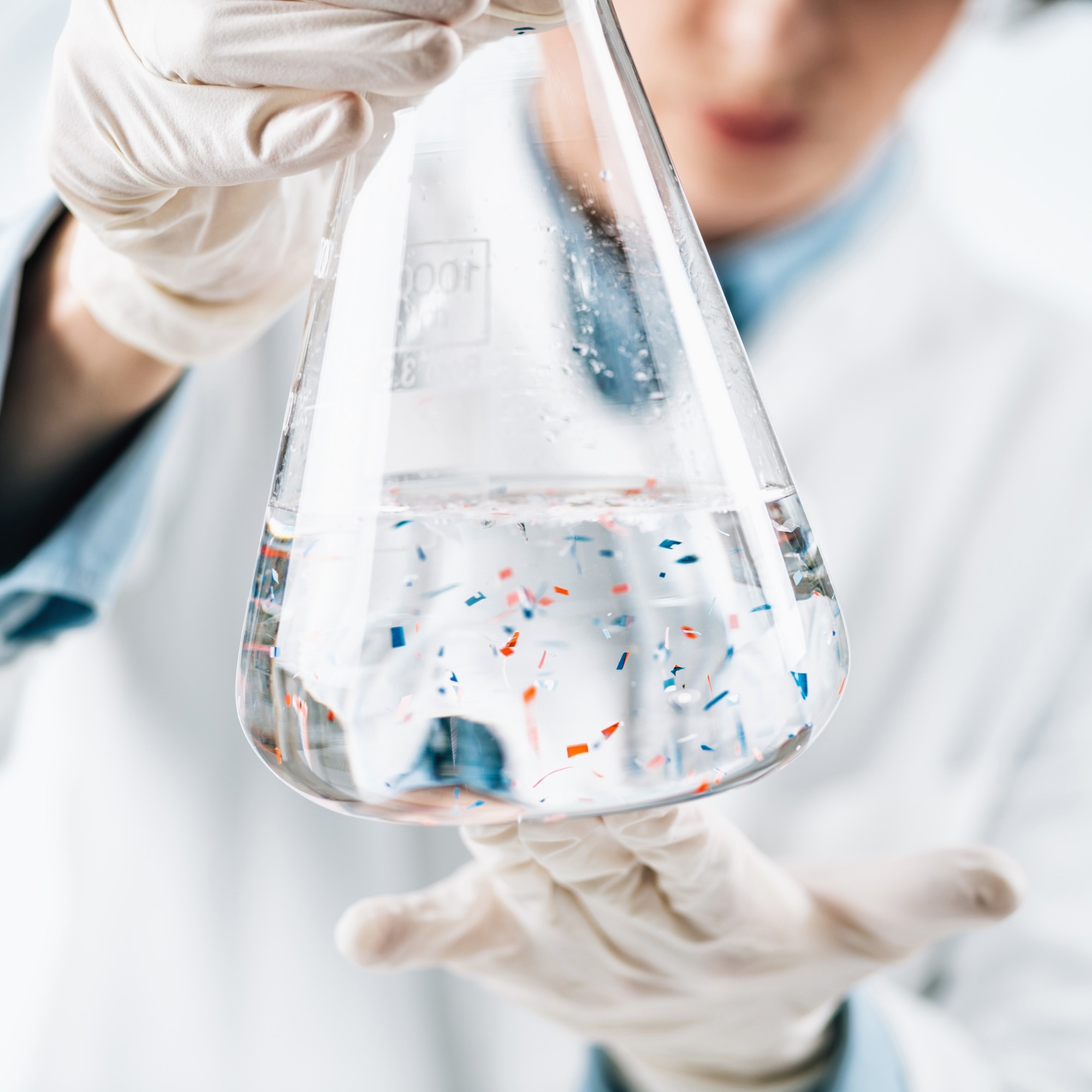In a recent article in Nature Communications, researchers introduced a pioneering self-regulating hydrogel system designed specifically to target microplastic pollution.

Image Credit: Microgen/Shutterstock.com
This device embodies a move toward advanced, smart materials that integrate multiple functions—transport, capture, and degradation—within a single, autonomous platform, aligning with modern advancements in clean technology aimed at efficient, environmentally friendly waste management.
Background
Microplastics are a pervasive environmental contaminant with dire ecological and health consequences. Their proliferation in oceans and waterways poses a significant threat to marine ecosystems and human health.
Once introduced into aquatic environments, microplastics can adsorb toxic chemicals and are ingested by marine organisms, leading to bioaccumulation.
The development of effective removal strategies is critical. However, current methods primarily rely on passive collection, which is energy-intensive or requires significant human intervention.
Recent research in soft robotics, nanomaterials, and photocatalysis has pointed toward the potential of smart materials that can respond to environmental stimuli, trigger specific actions, and perform remediation processes autonomously.
The concept of buoyancy-driven systems harnesses gas generation and absorption to facilitate movement within water columns, enabling targeted capture and degradation of pollutants without external controls.
The Current Study
The core material developed comprises a thermoresponsive hydrogel scaffold based on poly(N-isopropylacrylamide) (pNIPAM), a polymer known to swell and contract in response to temperature changes.
This hydrogel is embedded with nanoporous organosilica particles functionalized with catalytic and gas-generating elements.
The organosilica particles are also coated with photosensitizers that produce reactive oxygen species (ROS) when exposed to sunlight, facilitating the breakdown of microplastics.
To generate buoyancy, the system employs embedded platinum nanoparticles that catalyze the decomposition of glucose into oxygen gas. When the hydrogel reaches lower temperatures or specific environmental triggers, it swells, adsorbing microplastics from the water column.
Simultaneously, the catalytic activity within the organosilica particles produces oxygen temporarily stored in nanopores.
As gas accumulates, the hydrogel's density decreases, causing it to ascend towards the water surface, where sunlight activates the embedded photosensitizers. These generate ROS that initiate the degradation of adsorbed microplastics, breaking them down into smaller molecules or CO2, effectively neutralizing the pollutant. After degradation, the hydrogel cools or is otherwise prompted to collapse, releasing the accumulated gases and sinking back to the bottom, ready to repeat the cycle.
The entire process relies on environmental stimuli—temperature fluctuations, light, and chemical reactions—making it self-sustaining without external power sources, embodying the principles of green technology.
Results and Discussion
The developed hydrogel shuttle demonstrated robust, repeated cycles of ascent, pollutant capture, and degradation under laboratory conditions. Its design enabled it to autonomously move through water columns, collecting microplastics from significant depths and transporting them to the surface, where they could be effectively broken down via ROS generated during sunlight exposure.
Quantitative analyses revealed that the system could efficiently remove microplastics over multiple cycles, and the buoyancy mechanism reliably functioned due to controlled oxygen gas generation within nanopores.
The combination of thermoresponsive swelling and gas entrapment proved effective in modulating the hydrogel's position, addressing one of the key limitations of static remediation approaches.
The photocatalytic activity facilitated rapid and targeted degradation of the collected plastics, reducing microplastic presence in water to negligible levels.
Importantly, the system maintained its functional integrity over successive cycles, highlighting its potential for long-term deployment. This integrated approach exemplifies a significant advancement in clean technology by leveraging multifunctional smart materials capable of autonomous environmental cleanup, reducing reliance on external energy inputs, and enabling scalable, eco-friendly pollution mitigation.
An important aspect discussed is the platform's adaptability. Variations in catalyst concentration, light intensity, and environmental conditions can optimize performance, making this system versatile for diverse aquatic environments.
Using sunlight as an activation energy source aligns with sustainable principles, emphasizing the potential for real-world applications in remote or resource-limited areas.
The ability to perform multiple cycles of operation without manual intervention reduces operational costs and minimizes secondary waste, contributing further to environmental sustainability.
Conclusion
This study presents a groundbreaking, autonomous hydrogel-based platform that combines smart material design with clean technology principles to address the pressing issue of microplastic pollution.
The buoyancy-driven shuttle system exemplifies how multifunctional soft materials can be engineered to operate independently, transition seamlessly within water environments, and perform complex tasks such as pollutant capture and degradation without external controls or power supplies.
Its self-regulating nature minimizes resource consumption and operational oversight, marking a significant step toward sustainable, scalable remediation technologies.
Integrating catalytic, photocatalytic, and physical mechanisms within a single device underscores the interdisciplinary potential of materials science, nanotechnology, and environmental engineering to create effective solutions to pollution.
Further research can enhance system robustness, expand pollutant scope, and facilitate real-world deployment, progressing toward cleaner water bodies and healthier ecosystems.
Source:
Kollofrath D., Kuhlmann F., et al. (2025). A self-regulating shuttle for autonomous seek and destroy of microplastics from wastewater. Nature Communications 16, 6707. DOI: 10.1038/s41467-025-61899-4, https://www.nature.com/articles/s41467-025-61899-4